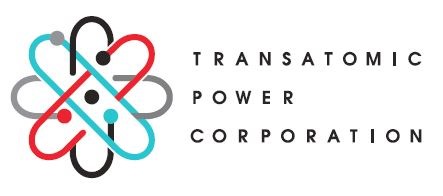Transatomic Power is an American company that was founded in 2011 by two MIT alumni. The goal of Transatomic was the creation of the Waste Annihilating Molten Salt Reactor (WAMSR). Its purpose was to digest spent nuclear fuel. It was also designed to burn either thorium or uranium as fuel. The Transatomic design was inspired by work at the Idaho National Laboratory in the 1960s where a molten salt reactor was developed. Transatomic claimed that their reactor would be seventy- five times as efficient as commercial nuclear power reactors.
The Transatomic design called for a low pressure, high temperature molten salt system. It was supposed to be able to generate five hundred and twenty megawatts of electricity. The safety systems in the design included the ability to automatically drain the molten salt if the temperature got too high. It would also produce much less nuclear waste than conventional nuclear power reactors.
The molten salt would be lithium fluoride (LiF). The reason that LF was chosen over other potential molten salts was because it could dissolve more fuel per unit of salt that other choices. On the other hand, it also lacks the neutron-doubling of a beryllium molten salt which was the choice of INL. This occurs when a nucleus absorbs a neutron and then emits two neutrons.
In order to reduce tritium production during reactor operation, lithium 7 would be added to the molten salt. One problem with that is that current world lithium 7 production is very small and a single Transatomic reactor would require tons.
Zirconium hydride (ZrH) was chosen as a moderator. Molten LF corrodes ZrH so the plan was to add yttrium hydride to the salt to prevent corrosion.
The vat, piping, heat exchangers and pumps in the reactor were to be made of Modified Hastelloy-N. This is a corrosion resistant nickel chromium alloy that was developed at the INL in the 1960s as part of the original research into molten salt reactors.
There is a concern about possible corrosion from the molten salt. The INL used beryllium to manage this problem in their research. The NRC might have require that a prototype Transatomic reactor be run for two full fuel cycles in order to assess corrosion risks. This could have taken up to a decade and would have impacted attempts to commercialize this reactor design.
In 2016, Transatomic published a white paper in which they said that their reactor would not be seventy five times as efficient as existing commercial power reactors. They said in the paper that it might be twice as efficient. In addition, they also dropped the claim that they could burn up spent nuclear fuel.
These admissions prompted the need for significant redesign of the Transatomic reactor. This resulted in delays that put the company behind several of their competitors in the race to produce a demonstration reactor. The longer timeline and reduced performance claims interfered with efforts to raise the fifteen million dollars needed to continue work. Transatomic claims that their reactor would still have commercial potential because it would generate less waste than current commercial power reactors and be much safer.
Transatomic has just announced that it is shutting down operations because it does not have enough money to continue. They also said that they were going release all their intellectual property into the public domain in the hope that other researchers can continue working on the design.
The Third Way think tank released a statement in response to the closure saying that it did not mean that there were major challenges for work on advanced nuclear power reactor design. It may, however, mean that there will be a shakeout and consolidation of companies engaged in the quest for advanced nuclear power reactors.
